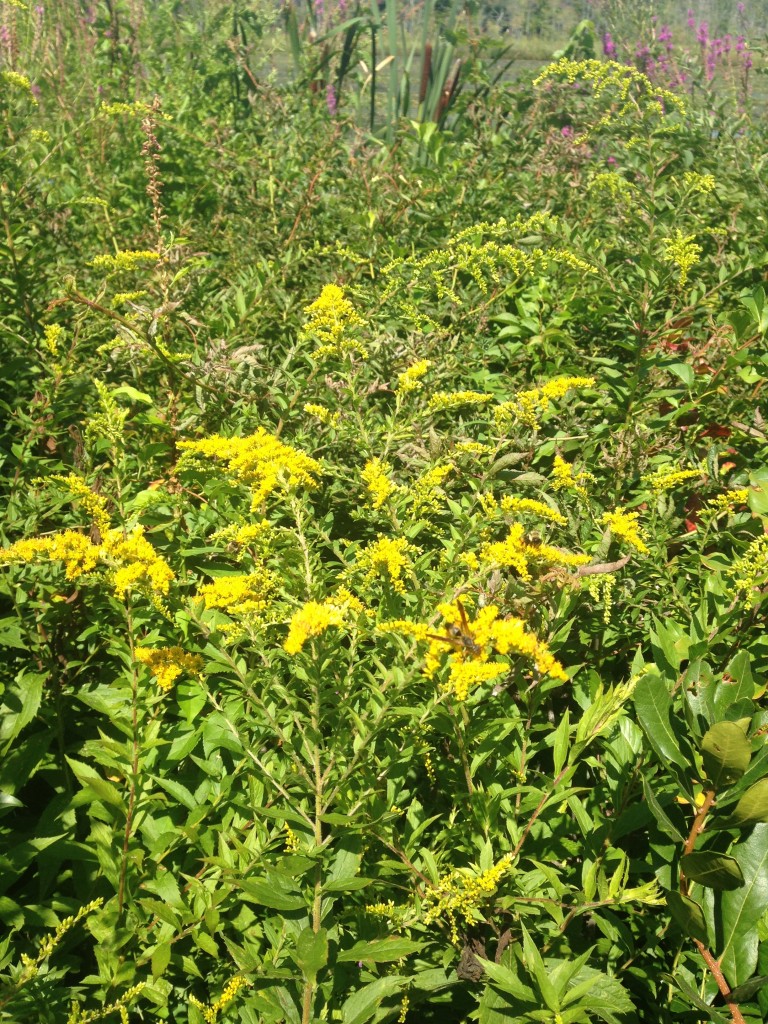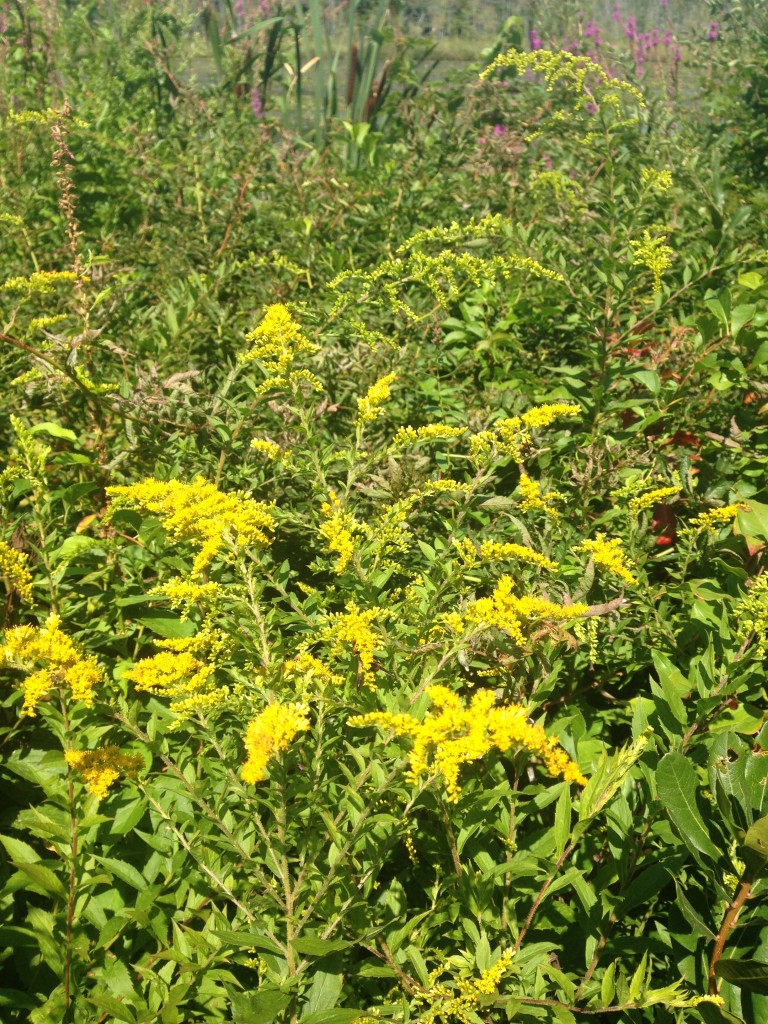 The end of August slides warmly past, hot sticky days end in nights cooler than those of a month ago. The dry ground of the garden waits for a storm. In the dark on the weathered steps in the back of the house I sit at night to listen to the loud insect chorus of the later summer. Into this time, poised for those first leaves to change, waiting with baited breath for the start of school, sneak the goldens. Their lacy blossoms shimmer in a haze of bee and beetle activity, nestled in the thick of plants most would call weeds. Suddenly the sides of roadways and the rare unmown meadows glint with the dappled flecks of goldenrods, patient natives offering nectar while their neighbor, Joe Pye weed fades from mauve to tan.
The end of August slides warmly past, hot sticky days end in nights cooler than those of a month ago. The dry ground of the garden waits for a storm. In the dark on the weathered steps in the back of the house I sit at night to listen to the loud insect chorus of the later summer. Into this time, poised for those first leaves to change, waiting with baited breath for the start of school, sneak the goldens. Their lacy blossoms shimmer in a haze of bee and beetle activity, nestled in the thick of plants most would call weeds. Suddenly the sides of roadways and the rare unmown meadows glint with the dappled flecks of goldenrods, patient natives offering nectar while their neighbor, Joe Pye weed fades from mauve to tan.
Goldenrods are members of a genus in the aster family. The genus, Solidago, has more than a hundred species. Several are native to this area, most to North America, although some are in Central America and a few on other continents. Some like seaside goldenrod, Solidago sempervirens, live in more specialized niches such as salt marches. Goldenrods are rugged perennial plants with tough stems and underground rhizomes (lateral stems new plants can grow from). The stems produce a latex when cut, once used to make rubber. The plants also contain compounds used in traditional medicines against sore throats, toothache and kidney problems.
In addition, goldenrods have an important place in the history of ecology. Dick Root, an eminent ecologist at Cornell University, spent much of his career studying the groups of small creatures (insects, mites etc.) that live on goldenrods. Within that tiny microcosm of the world, he looked for, and with his many students, found new ideas about how ecological niches are organized, how communities work, and what herbivores do to the plants they eat.
Goldenrods are insect pollinated. Their heavy sticky pollen does not cause the hayfever that ragweed, flowering at the same time, does. Insects such as bees and wasps, buzz about, sometimes collecting the nectar many goldenrod species produce. In Europe, goldenrods are planted in gardens; their abundant, tiny flowers form a halo of yellow on the tops of stalks . In China and Germany, cultivated goldenrods have escaped and become invasive. However, in North America, where they are an important part of ecosystems, their natural beauty is often overlooked. Rejoice in the pleasure of the goldenrod, which can be found swaying in the light late August breeze, by many of the roads and walkways in this area!

“bated” breath. short for “abated”.
love, the ocd grammar corrector